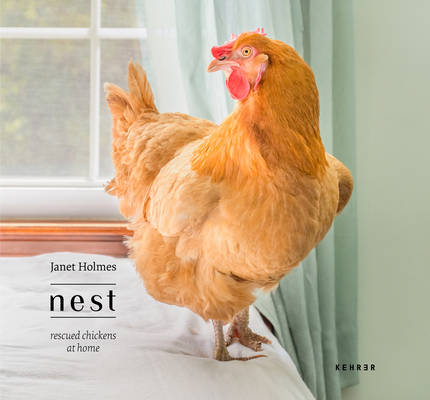
- Afhalen na 1 uur in een winkel met voorraad
- Gratis thuislevering in België vanaf € 30
- Ruim aanbod met 7 miljoen producten
- Afhalen na 1 uur in een winkel met voorraad
- Gratis thuislevering in België vanaf € 30
- Ruim aanbod met 7 miljoen producten
Zoeken
Omschrijving
How do we decide which animals are family and which are food? Why are we surprised to see a rooster gazing out the kitchen window or a hen studying herself in the mirror? After all, chickens are present in many homes, as flesh and eggs, but not as individuals with personalities of their own. In early 2017, photographer Janet Holmes met a hen suffering from reproductive illness at the Wild Bird Fund in New York City, where she volunteered as a caregiver. During her search to find a permanent home for the hen after she was discharged from the Fund's clinic, Janet Holmes discovered a network of people (primarily women) who turn their homes into sanctuaries for rescued chickens. She decided to make portraits of the chickens and their rescuers to honour both the birds who had suffered so much before their rescue and the people who invested so much love, time, and money caring for them.
Specificaties
Betrokkenen
- Auteur(s):
- Uitgeverij:
Inhoud
- Aantal bladzijden:
- 120
- Taal:
- Engels
- Geïllustreerd:
- Ja
Eigenschappen
- Productcode (EAN):
- 9783868289879
- Verschijningsdatum:
- 22/09/2020
- Uitvoering:
- Hardcover
- Formaat:
- Genaaid
- Afmetingen:
- 244 mm x 224 mm
- Gewicht:
- 703 g

Alleen bij Standaard Boekhandel
+ 79 punten op je klantenkaart van Standaard Boekhandel
Beoordelingen
We publiceren alleen reviews die voldoen aan de voorwaarden voor reviews. Bekijk onze voorwaarden voor reviews.











